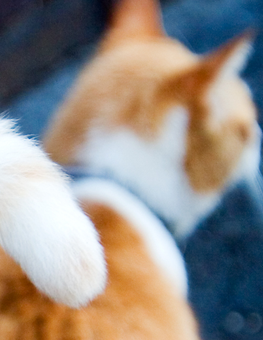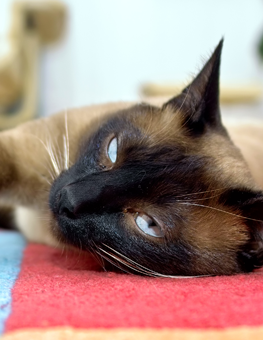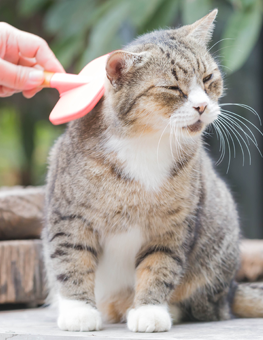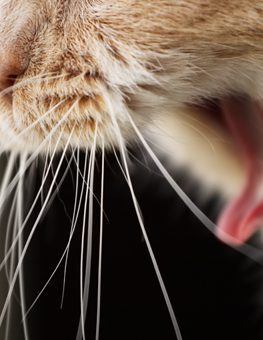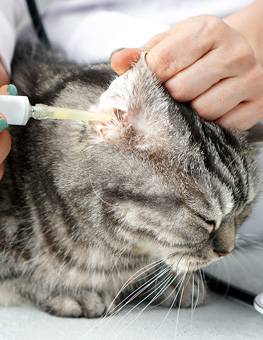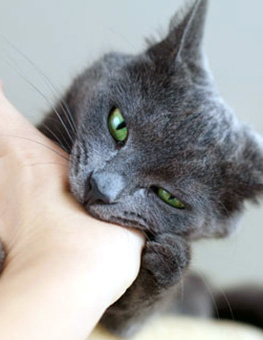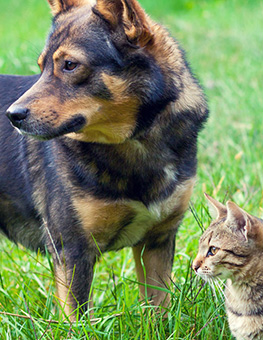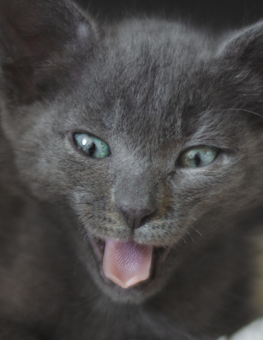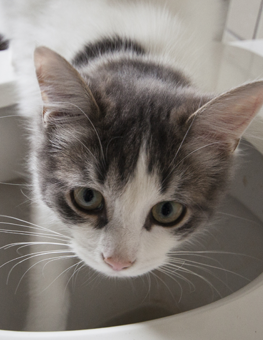Why Do Cats Have Whiskers?
Like most species, cats use their eyes, ears, and nose to assess the world around them. However, cats also have an important sensory tool that heightens their perception – their whiskers! But what are cat whiskers for?
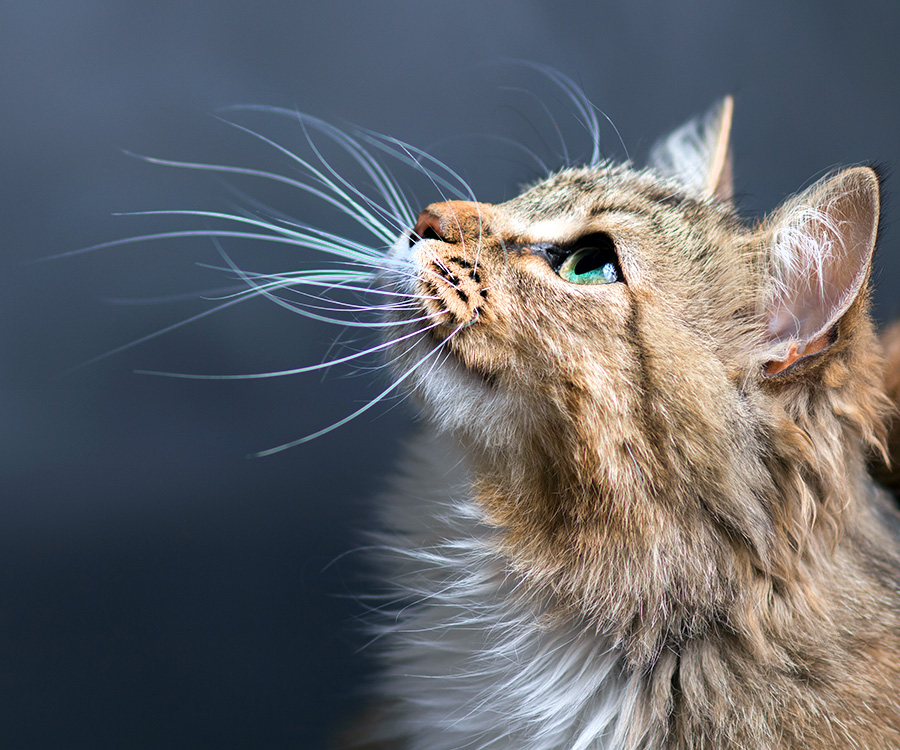

Whiskers act as a built-in GPS to help cats navigate the world.
Whiskers are specialized hairs that serve many purposes. The tips of a cat’s whiskers relay signals to her brain and communicate more information about her surroundings, such as how much space there is to maneuver. They almost act like an insect’s antennae! Find out more about the primary function of whiskers and how they act as a built-in GPS to help cats navigate the world around them.
What is the Purpose of a Cat’s Whiskers?
Also called “vibrissae,” whiskers are long, stiff, yet flexible hairs located between the corners of a cat’s mouth and outer edges of the nose. They can also be found under the chin, above both eyes and on their hind legs – all areas which are rich in nerves.
Felines have between 16 and 24 whiskers in their lifetime, all of which match their body width so they can determine if they will fit between certain gaps without getting trapped. Whiskers also serve as a warning system to a cat when she’s sleeping, as they alert her if something is approaching her face in the darkness so she’s not caught off-guard.
Cat whiskers also serve the important purpose of helping the cat keep her balance by sending messages to the brain about the specific positions of the cat’s legs and body, even playing a big role on helping the cat always land on her feet!
Do Cat Whiskers Fall Out?
Because whiskers are just specialized hairs, yes, they do fall out from time to time. Like other hairs, they can break or otherwise become damaged, so they no longer work how they should and are no longer useful to the cat. You may have found a few on your floor or furniture over the years if you’ve shared your home with a cat for a while. This is totally normal and nothing to be concerned about. In fact, some people even consider finding a cat’s whisker to be good luck! However, if your cat is losing many whiskers at a time or losing them more frequently than every so often, it could indicate a medical issue such as allergies or a skin condition, and you should involve your veterinarian.
Do Cat Whiskers Grow Back?
Because whiskers emulate a sense of touch for cats, it’s important that you never trim or cut them. Even though it doesn’t hurt to have whiskers cut or damaged, since they’re just hair, it can be detrimental to your cat’s balance and senses. However, if your cat loses a whisker or if you accidentally damage or pull one out, don’t worry. They will grow back if cut or damaged. It typically takes between six and twelve weeks for a whisker to fully grow back after falling out.
How Do Whiskers Relate to Body Language?
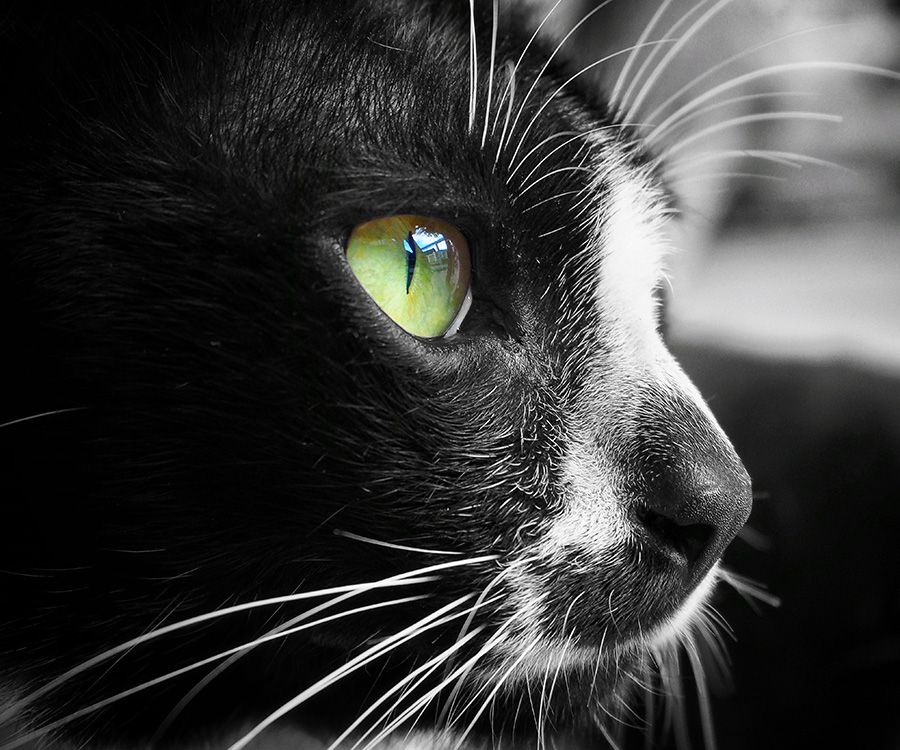

A cat’s whiskers are also a good indicator of how she’s feeling.
Aside from communicating her mood through purring, hissing, or other forms of body language, a cat’s whiskers are also a good indicator of how she’s feeling.
Relaxed whiskers (standing still and straight out) mean your cat is content and happy. Whiskers pushed forward tensely indicate she’s on the prowl to hunt. If you notice the whiskers are pulled back along her cheeks, she’s stressed or afraid. When evaluating your cat’s body language, however, remember that whisker position is only a small piece of the puzzle. Pay close attention to the cat’s ears, tail, eyes, and body, too and consider the context of the situation.
What Else Should I Know About Cat Whiskers?
Whiskers are very sensitive, so take care when petting your cat and handle them gently and with care. They’re so sensitive, in fact, that your cat may experience something called “whisker fatigue.” This can occur when unnecessary or frequent stress is placed on the whiskers. The most common time this occurs is when the cat is eating or drinking. Have you ever noticed that your cat only eats from the center of the bowl, then pretends it’s empty while there is still plenty of food around the perimeter of the bowl? That could be from whisker fatigue and a reluctance to touch her whiskers to the side of the bowl to eat. You can choose a flat dish so that the whiskers won’t press against the sides as your cat is eating or drinking.
Whiskers are both fascinating and adorable parts of your cat’s body and serve many important purposes. Next time you’re enjoying your kitty’s company, take some time to admire and appreciate these important and sensitive hairs!





